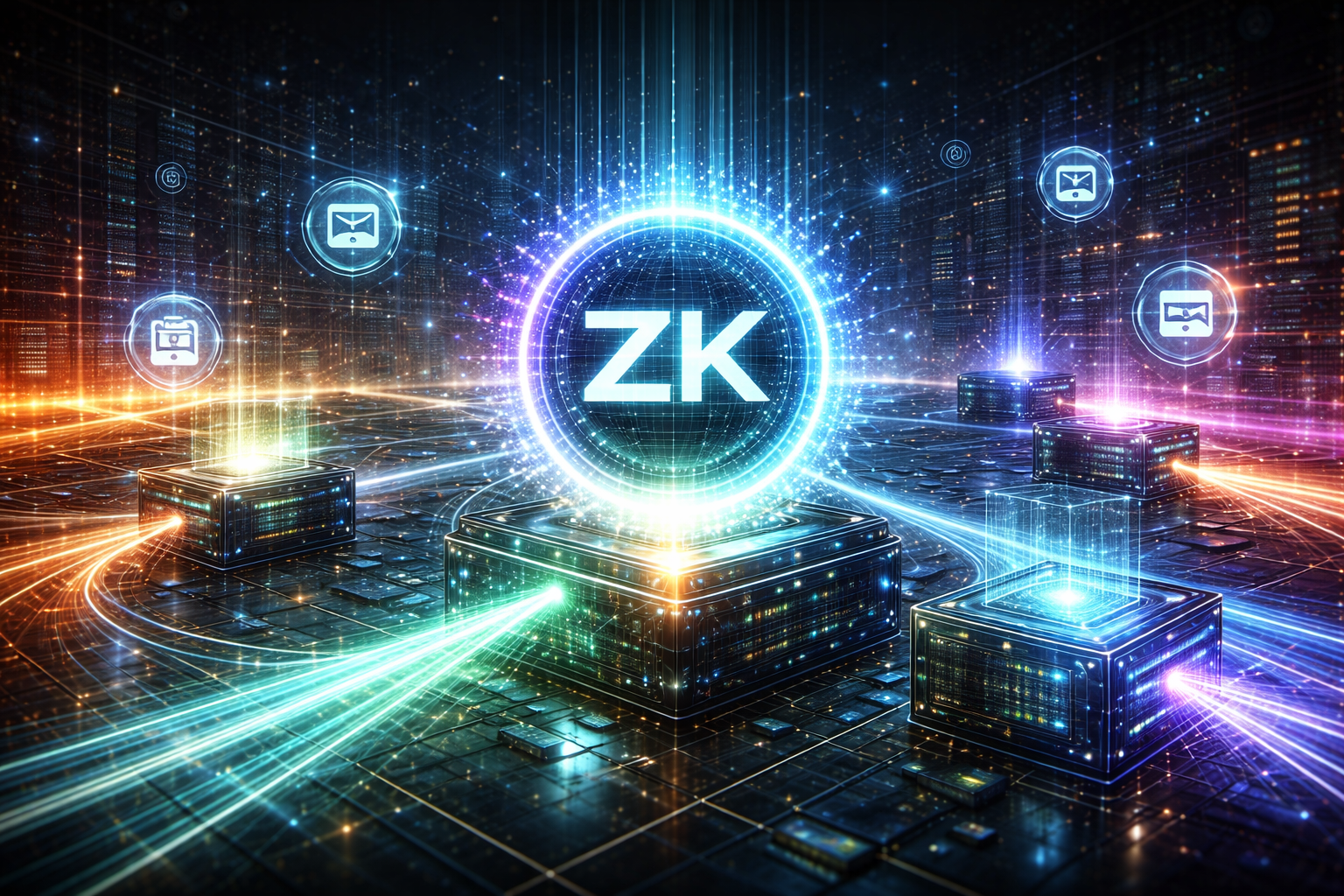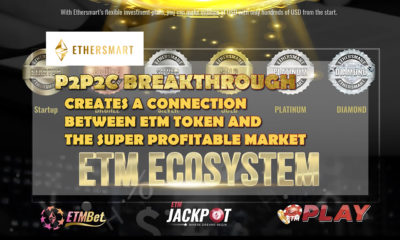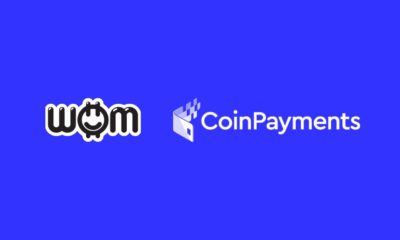Blockchain
Lazarus Group $200M Crypto Laundering Explained

Lazarus Group, a North Korean cybercrime syndicate, has recently orchestrated a massive $200 million cryptocurrency laundering operation using sophisticated techniques involving mixers and peer-to-peer (P2P) exchanges, thereby evading global tracking efforts.
This article delves into the methods used and their implications for cybersecurity.
In-depth Analysis of Lazarus Group’s $200M Laundering Scheme
Recent developments have implicated North Korea’s Lazarus Group in a massive $200 million cryptocurrency laundering operation.
The Scheme intricately utilized cryptocurrency mixers and P2P exchanges to obscure the origins of stolen funds, presenting significant challenges to global financial security and law enforcement.
Techniques Used in the $200M Crypto Laundering

The Role of Cryptocurrency Mixers
Cryptocurrency mixers, or tumblers, play a crucial role in the laundering process. These services blend potentially identifiable or “tainted” cryptocurrency funds with others, making it challenging to trace the funds back to their source. By breaking the link between initial deposits and final withdrawals, mixers provide a layer of anonymity essential for illicit activities.
Investigations reveal that the Lazarus Group channeled substantial amounts of stolen funds through several prominent mixing services, thereby complicating the tracing process.
How Mixers Complicate Tracking
Tracking funds through a mixer involves sophisticated blockchain forensic techniques that sometimes lead to dead ends.
Following the trail requires law enforcement and blockchain analytics firms to differentiate between legitimate and illegitimate payments, which is made more difficult by the volume and anonymity of transactions processed by these mixers.
Utilization of P2P Exchanges
Parallel to using mixers, the Lazarus Group also extensively utilized P2P exchanges. These platforms facilitate direct transactions between users without a centralized authority, offering additional layers of anonymity. By conducting transactions on these platforms, often under fake identities, the group managed to convert mixed cryptocurrencies into new, less traceable forms.
Features of P2P Exchanges Anonymity
The inherent design of P2P exchanges emphasizes user privacy and minimal oversight, which benefits cybercriminals. These platforms often do not require extensive identity verification, allowing users to maintain high levels of anonymity.
Noones and Paxful were the Bitcoin P2P exchanges that were mainly used by Lazarus Group.
The infamous Lazarus Group has been identified as the orchestrator behind several high-profile cryptocurrency breaches in recent years. The FBI has linked the group to the $41 million attack on Stake.com, a gaming firm, as well as the $622 million exploit of the Ronin Bridge. In total, the group has amassed over $2 billion in stolen digital assets from its various heists.
With the help of industry leaders such as crypto exchange Binance and top Ethereum wallet MetaMask, ZachXBT has pinpointed multiple accounts believed to be connected to the Lazarus Group. These accounts allegedly received $44 million from Lazarus-led hacks and successfully laundered the stolen funds into fiat currency.
Challenges in Tracking Laundered Cryptocurrencies
The combined use of cryptocurrency mixers and P2P exchanges presents formidable challenges for law enforcement and blockchain forensic experts.
Tracking the origins of funds becomes exponentially more complex as these technologies effectively break the links between the initial deposits and their final withdrawals.
The sophistication of the Lazarus Group’s strategies highlights the ongoing arms race in digital forensics, necessitating advancements in investigative techniques to keep pace with such elusive cybercriminal tactics.
It underscores the need for international cooperation and stronger regulatory frameworks to monitor and control these decentralized platforms.
Global Impact and Response

The global response to the Lazarus Group’s laundering operation has been one of alarm and mobilization.
International Reactions to the Laundering Operation
Recognizing the need for a coordinated effort to combat the misuse of cryptocurrency platforms, governments, and international bodies have begun tightening regulations on digital currency exchanges to enforce compliance with anti-money laundering (AML) standards and know-your-customer (KYC) protocols.
The incident has catalyzed discussions at various global forums, focusing on enhancing the regulatory framework around cryptocurrencies.
These measures aim to decrease the anonymity associated with crypto transactions, making it harder for groups like Lazarus to exploit these platforms for illicit purposes.
Changes in Cryptocurrency Regulation Post-Lazarus Group
Post-Lazarus, the regulatory landscape is seeing significant shifts. Jurisdictions that previously adopted a laissez-faire approach to cryptocurrency regulation are reconsidering their stance.
The focus has increasingly turned towards ensuring that exchanges and other crypto services adhere strictly to international AML guidelines. For instance, enhanced monitoring of suspicious transactions and the implementation of advanced tracking systems are being discussed as imperative steps to prevent similar incidents.
This incident has underscored the importance of global cooperation in the realm of financial technology. By sharing intelligence and aligning regulatory frameworks, countries can better prevent the flow of illicit funds through digital channels.
Technological Countermeasures
The field of cryptocurrency forensics is rapidly advancing, keeping pace with the complex strategies employed by cybercriminals like the Lazarus Group.
Advances in Crypto-Forensic Tools
The field of cryptocurrency forensics is rapidly advancing, keeping pace with the complex strategies employed by cybercriminals like the Lazarus Group.
Recent developments have emphasized the importance of sophisticated forensic technologies that can trace and identify illicit cryptographic activities more effectively.
Forensic specialists use a variety of techniques to track stolen or laundered cryptocurrency.
These include pattern analysis, which scrutinizes the transaction patterns on the blockchain to identify suspicious activities, and address clustering, where related addresses are analyzed to determine connections between different transactions that may seem unrelated at first glance.
Another critical technique is transaction tracing. Every transaction recorded on the blockchain can be examined to follow the path of funds as they move through various wallets and exchanges.
This method is crucial for mapping the journey of laundered money and potentially freezing involved assets to hinder further illicit activities, according to CNC Intelligence.
Enhancing Exchange Security Protocols
Beyond tracing and analysis, the role of exchanges has become increasingly pivotal in combating cryptocurrency crimes.
Exchanges are now integrating more robust KYC (Know Your Customer) and AML (Anti-Money Laundering) regulations to prevent the misuse of their platforms.
Per BDO, this includes real-time monitoring solutions provided by partnerships with blockchain analytics companies, which help identify and report suspicious transactions as they occur.
The evolution of blockchain forensics not only aids in immediate crime detection and prevention but also plays a significant role in shaping regulatory approaches toward cryptocurrency worldwide.
The collaboration between forensic experts, regulatory bodies, and financial institutions is crucial for developing a secure and transparent crypto ecosystem, as reported by CryptoGlobe.
Future Challenges and Strategies
As the cryptocurrency landscape continues to evolve, so does the sophistication of cyber threats.
Preparing for Future Cyber Threats in Crypto
The Lazarus Group’s recent activities underscore the ongoing need for the crypto industry to stay ahead of cybercriminals through innovation and enhanced security measures.
The industry faces the dual challenge of improving its defensive technologies while also educating users and regulators about the best practices for safeguarding digital assets.
Policy Recommendations for Enhanced Security
To combat future threats, policymakers and industry leaders must collaborate to create robust regulatory frameworks that balance security with innovation.
It is also vital to improve worldwide coordination between law enforcement and intelligence agencies.
To help stop possible security breaches before they occur, this involves exchanging best practices, information, and strategies for handling cyber threats.
The continuous refinement of blockchain forensics tools, coupled with proactive regulatory policies, will be pivotal in mitigating risks and ensuring the integrity of the cryptocurrency markets.
Conclusion and Summary
This investigation into the Lazarus Group’s activities highlights the ongoing arms race in digital forensics. It underscores the need for advanced tools and international cooperation to combat sophisticated forms of money laundering effectively.
FAQs
- What are cryptocurrency mixers, and how do they facilitate laundering? Cryptocurrency mixers combine various streams of potentially identifiable cryptocurrency to obscure the origin of funds, making it difficult to trace illegal activities.
- How do peer-to-peer (P2P) exchanges increase anonymity? P2P exchanges allow users to trade cryptocurrencies directly with each other without the need for a centralized authority, often requiring less personal information, thus enhancing anonymity.
- What blockchain forensic techniques are used to track laundered cryptocurrencies? Techniques include pattern analysis, address clustering, transaction tracing, and exchange analysis, which help in identifying and linking suspicious transactions to real-world identities.
- What role do regulations play in preventing cryptocurrency laundering? Regulations enforce stricter KYC and AML protocols on exchanges and other crypto services to reduce anonymity and increase the traceability of crypto transactions.
- How can individuals and organizations protect themselves against crypto laundering? Adopting best security practices, using reputable exchanges, and staying informed about the latest in cryptographic technology can mitigate the risk of falling victim to such schemes.
Blockchain
Walrus Protocol Mainnet Launch Secures $140M Funding, Signals New Phase for Decentralized Storage

Walrus Protocol has officially entered the spotlight with the launch of its mainnet, backed by a substantial $140 million funding round. The debut marks a significant milestone not only for the project itself, but also for the broader decentralized storage sector, which has been steadily gaining relevance as blockchain applications demand more scalable, verifiable data solutions.
Supported by Mysten Labs, the team behind the Sui blockchain, Walrus is positioning itself as a next-generation decentralized storage protocol designed to handle the growing needs of AI-driven applications, media platforms, and on-chain data-intensive use cases.
Walrus mainnet launch brings decentralized storage into focus
The Walrus mainnet went live on March 27, 2025, signaling the transition from development to full production readiness. Alongside the launch, the project confirmed that it has secured $140 million in funding earmarked for ecosystem growth, infrastructure development, and long-term sustainability.
This funding level places Walrus among the better-capitalized decentralized storage initiatives in the market. Historically, large funding rounds at mainnet launch tend to increase institutional confidence, particularly when paired with clear tokenomics and a defined roadmap. For Walrus, the capital injection is expected to support validator participation, developer incentives, and expansion of real-world use cases.
The protocol operates closely with the Sui ecosystem, leveraging its performance-oriented architecture. This relationship could prove strategically important as projects built on Sui look for native, scalable storage solutions that align with the chain’s low-latency design.
Why Walrus stands out in decentralized data storage
Unlike earlier decentralized storage platforms that primarily focused on file persistence, Walrus is designed around verifiable data availability. This distinction is increasingly important for applications involving artificial intelligence models, dynamic media content, and large datasets that must remain auditable over time.
Traditional decentralized storage solutions often struggle to meet the performance and verification requirements of modern AI workloads. Walrus addresses this gap by enabling developers to prove that data exists, remains intact, and is retrievable without relying on centralized intermediaries. This capability positions Walrus at the intersection of decentralized infrastructure and next-generation data computation.
Industry observers note that this approach could make Walrus particularly attractive for AI training pipelines, decentralized content networks, and blockchain-based analytics platforms that require both scalability and trust minimization.
Leadership and ecosystem strategy
As part of the mainnet rollout, the Walrus Foundation appointed Rebecca Simmonds as managing executive. While detailed public information about her prior industry roles remains limited, the appointment suggests a focus on operational scaling and ecosystem coordination as the protocol transitions into its post-launch phase.
Governance and ecosystem management are expected to play a key role in Walrus’ evolution. With significant funding secured, the challenge now shifts from building technology to fostering sustained usage, onboarding developers, and maintaining network security through decentralized participation.
Market response and token dynamics
Following the mainnet launch, Walrus’ native token, WAL, became available on select trading venues, drawing early market attention. Initial trading activity showed elevated volume, a common pattern during early price discovery phases. While short-term price movements remain volatile, analysts often view such activity as a reflection of curiosity and positioning rather than long-term valuation.
Historically, decentralized infrastructure tokens tend to see more durable demand when network usage grows alongside speculation. For Walrus, the key metric to watch will be adoption by developers and data-heavy applications rather than short-term market performance.
What this means for the broader crypto landscape
The Walrus mainnet launch reinforces a broader trend within crypto: infrastructure is becoming as important as financial primitives. As blockchains mature, demand is shifting toward reliable data storage, computation, and verification layers that support complex applications.
With $140 million in funding, backing from Mysten Labs, and a focus on AI-compatible data storage, Walrus enters the market with meaningful advantages. Whether it can translate those advantages into sustained network activity will determine its long-term impact.
For now, the launch signals that decentralized storage is moving beyond simple file hosting and into a phase where verifiable, high-performance data infrastructure could become a foundational layer for Web3 and AI-driven ecosystems alike.
Blockchain
zkPass (ZKP) Adoption Accelerates After Upbit Listing as Global Exchange Support Grows

zkPass (ZKP) is drawing increased attention across the crypto market following its recent listing on Upbit, one of Asia’s largest and most influential cryptocurrency exchanges. The move has significantly expanded global access to ZKP while bringing greater visibility to zero-knowledge proof technology, a fast-growing area within Web3 infrastructure.
Rather than triggering short-term speculation alone, the Upbit listing has shifted the conversation toward adoption, accessibility, and the broader role of privacy-preserving technologies in digital identity and data verification.
Upbit Listing Expands Reach for zkPass
Upbit plays a central role in the South Korean crypto market, which is known for high retail participation, deep liquidity, and rapid engagement with emerging technologies. By securing a listing on the exchange, zkPass gains exposure to a large and active user base, alongside stronger fiat on-ramps and improved market depth.
For ZKP, the listing represents more than just another trading venue. It places the token within a regulated, high-visibility environment that often serves as an early indicator of broader market acceptance. Historically, assets listed on major regional exchanges like Upbit benefit from increased discoverability, especially among users who may not actively seek out smaller or niche projects.
The listing also comes alongside expanding exchange integrations elsewhere, suggesting a broader trend of growing platform support rather than a single isolated event.
Why Zero-Knowledge Proofs Are Gaining Attention
The renewed interest in zkPass reflects a wider shift toward privacy-preserving infrastructure. Zero-knowledge proofs allow users to verify information—such as identity credentials or eligibility—without revealing the underlying data. This approach addresses a critical challenge in Web3: balancing privacy with compliance.
As digital identity becomes more central to financial services, gaming, governance, and cross-platform access, tools that enable selective disclosure are increasingly viewed as essential. zkPass operates within this intersection, offering solutions that support user-controlled identity while remaining compatible with regulatory requirements.
Governments, enterprises, and developers are actively exploring frameworks that reduce data exposure while still meeting verification standards. In this environment, zero-knowledge systems are moving from experimental concepts to practical infrastructure, helping explain why projects like zkPass are gaining traction.
What Exchange Support Signals for Privacy-Focused Crypto
Major exchange listings often function as a form of market validation. While they do not guarantee price performance, they typically indicate that a project has met certain technical, legal, and operational criteria. For privacy-focused tokens, this is particularly meaningful, as such projects have historically faced scrutiny or limited access on centralized platforms.
Upbit’s support underscores growing acceptance of privacy-enhancing technologies that are designed to work alongside compliance frameworks, rather than against them. This aligns with a broader industry shift toward “regulatory-compatible privacy,” where users maintain control over their data without removing accountability.
As more exchanges add ZKP, liquidity improves and participation broadens, allowing the ecosystem to grow beyond early adopters and specialized users.
Why Investors Are Watching zkPass More Closely
Market observers are increasingly focused on zkPass not because of short-term price action, but due to its positioning within long-term Web3 narratives. Exchange listings tend to increase visibility, but sustained attention often depends on whether a project aligns with structural trends.
Privacy and identity remain among the most active areas of development in Web3. Zero-knowledge proofs are now considered a core building block for decentralized applications, particularly those involving credentials, access control, and data sharing.
For many investors, ZKP’s expanding exchange presence signals that privacy infrastructure tokens are moving closer to mainstream relevance. The focus has shifted from novelty to real-world use cases, adoption momentum, and integration into broader digital ecosystems.
As exchange support continues to expand and demand for secure data verification tools grows, zkPass is increasingly viewed as part of a larger movement toward privacy-first Web3 infrastructure rather than a standalone speculative asset.
Blockchain
Solana DEX Volume Surges to $1.7 Trillion, Overtakes Bybit in Spot Trading

Solana’s decentralized finance ecosystem has reached a major milestone, with decentralized exchange (DEX) spot trading volume surpassing $1.7 trillion year-to-date, according to data compiled by Artemis. The figure places Solana ahead of centralized exchange Bybit and positions it as the second-largest venue for spot trading globally, trailing only Binance.
The development highlights a notable shift in trader behavior, as activity continues to migrate from centralized platforms toward on-chain markets built on high-performance blockchains.
Solana’s DEX Growth Signals Structural Change
The surge in Solana DEX volume reflects more than short-term speculation. Throughout the year, decentralized platforms on the network have consistently captured market share, driven by improvements in infrastructure, liquidity depth, and user experience.
Solana’s technical design remains a key factor. High transaction throughput and low fees allow traders to execute strategies that would be cost-prohibitive on slower or more expensive networks. As a result, frequent traders, arbitrageurs, and market makers increasingly view Solana DEXs as viable alternatives to centralized exchanges.
The network’s recovery from earlier reliability concerns has also played a role. After periods of congestion and outages in previous years, Solana has delivered more stable performance, helping rebuild confidence among both users and developers.
Protocols Driving the Volume
Several native Solana protocols have contributed meaningfully to the rise in trading activity. Aggregators and automated market makers such as Jupiter, Orca, and Raydium have matured into core liquidity hubs, offering competitive pricing and deep order execution.
These platforms benefit from composability within Solana’s ecosystem, allowing traders to route orders efficiently across multiple liquidity pools. Over time, this has reduced slippage and improved execution quality, narrowing the gap between decentralized and centralized trading experiences.
In addition, growing participation from professional traders has increased overall volume durability. Rather than isolated retail spikes, Solana’s DEX flows increasingly resemble sustained institutional-style activity.
Solana vs. Centralized Exchanges
By surpassing Bybit in spot trading volume, Solana demonstrates that decentralized exchanges can compete directly with centralized platforms at scale. While Binance remains the largest global venue, the gap between centralized and decentralized trading is narrowing.
This trend reflects broader changes in market preferences. Traders are increasingly sensitive to counterparty risk, custody concerns, and regulatory uncertainty surrounding centralized exchanges. Decentralized platforms, which allow users to retain control of their assets, offer an alternative that aligns with these concerns.
At the same time, improved tooling and user interfaces have lowered the barrier to entry for on-chain trading, making decentralized platforms more accessible to non-technical users.
What This Means for Solana’s Future
The $1.7 trillion milestone reinforces Solana’s position as one of the most active DeFi ecosystems in the market. High DEX volume often correlates with stronger network effects, attracting additional developers, liquidity providers, and infrastructure projects.
If current trends persist, Solana’s decentralized exchanges could continue to capture a larger share of global trading activity, particularly during periods of market volatility when traders seek speed and cost efficiency.
More broadly, the data suggests that decentralized finance is no longer a niche alternative. On networks like Solana, it is becoming a central pillar of crypto market structure, capable of rivaling traditional centralized exchanges in both scale and relevance.
As DeFi adoption expands, Solana’s ability to support high-volume, low-cost trading positions it as a key player in the next phase of crypto market evolution.
-

 Crypto4 years ago
Crypto4 years agoCardalonia Aiming To Become The Biggest Metaverse Project On Cardano
-

 Press Release5 years ago
Press Release5 years agoP2P2C BREAKTHROUGH CREATES A CONNECTION BETWEEN ETM TOKEN AND THE SUPER PROFITABLE MARKET
-

 Blockchain5 years ago
Blockchain5 years agoWOM Protocol partners with CoinPayments, the world’s largest cryptocurrency payments processor
-

 Press Release5 years ago
Press Release5 years agoETHERSMART DEVELOPER’S VISION MADE FINTECH COMPANY BECOME DUBAI’S TOP DIGITAL BANK
-

 Press Release5 years ago
Press Release5 years agoProject Quantum – Decentralised AAA Gaming
-

 Blockchain5 years ago
Blockchain5 years agoWOM Protocol Recommended by Premier Crypto Analyst as only full featured project for August
-

 Press Release5 years ago
Press Release5 years agoETHERSMART DEVELOPER’S VISION MADE FINTECH COMPANY BECOME DUBAI’S TOP DIGITAL BANK
-

 Blockchain6 years ago
Blockchain6 years ago1.5 Times More Bitcoin is purchased by Grayscale Than Daily Mined Coins






